
Château d’Oiron was built in the 16 th century with a fabulous gallery painted to the glory of King François I
Jean Hubert Martin has accustomed us to strange titles for his exhibitions. He is famous for having curated “Les Magiciens de la Terre” on African contemporary art, at Centre Pompidou in 1989. The latest show, in 2016 at Grand Palais, assembled 185 artworks from all times and styles and was called “Carambolage“, car crash or collision. Before opening a large exhibition at the Pushkin museum in Moscow next November and another one at Musée d’art et d’histoire, MAH, in Geneva next year, he has prepared a summer show at Château d’Oiron. This Renaissance castle between Angers and Poitiers, for which he already constituted a strong collection of contemporary art almost thirty years ago, is showing “Grand Bazar“, a choice of works from Antoine de Galbert‘s private collection and a title inspired by Istanbul’s Bazaar. It is in line with Oiron’s permanent installation, is sometimes frightening and disgusting, often surprising, always clever and very pleasing to the eye.

The oak panelings in the hallway are filled with photos by the late Christian Boltanski representing the children of Oiron and surround Theo Mercier, Le Solitaire, 2010 and Gilles Barbier, The little ballerina, 2013
What’s fun in this castle is that some rooms are richly gilt and in perfect condition after an expensive renovation and others are completely bare. Those of course are the ones which inspired most Jean Hubert Martin. I personally loved the Salle des Jacqueries, where ancestors’ portraits hang in a crazy way with revolutionary forks planted between them. This is supposed to represent the French Revolution as seen by Bosnian conceptual artist Braco Dimitrijevic.
Another favorite is Barthélémy Toguo‘s video of himself watering a bunch of dollar bills to invite them to grow. It was made in 2005 and already shows the artist’s genius. His earlier work, “New world’s climax”, 2000, is a bunch of immigration stamps made of heavy wood. The tragic vision of immigration shown in a soft way. Ghaneen artist, Almighty God, and Nicolas Darrot are in the Salle des Ondes with aquatic works. In the chapel hangs a crucifix made with beetles by Jan Fabre, while upstairs a large (blind) mole welcomes the visitor in the attic. The theme of the room is the eye with all sorts of horrendous blindness resulting of Hiroshima’s bombings, a masked pig by performance artists Arnaud Labelle-Rojoux facing Pierre-Louis Pierson’s portrait of a masked Comtesse de Castiglione whom JHM compares to Cindy Sherman in the catalog. A picture by Valérie Belin, “Black Women I”, 2001, Philippe Dereux‘s “Forêt de regards”, 1979-1996, Damien Deroubaix‘s “Cyclops”, 2009, complement a few eyes by Roman Cieslewicz. Another painting by Almighty God “the eyes of the lord” particularly attracted my eye…
The frightening photo by Marina Abramović “Balkan Baroque” represents her washing hundreds of bloody bones (from the genocides) in 1997, while American photographer Spencer Tunick shows hundreds of naked bodies lying on a beach in Maine, the same year of 1997. Both works are shown in the superb Renaissance attic with old beams. Gloria Friedmann‘s installation in la Salle de la Vanité des bâtisseurs shows a pyramid of worn out skulls and another of stones. This German artist who lives in Burgundy and is married to Bertrand Lavier, will have her own exhibition in Oiron next year. And the cherry on the cake at the end of the visit is the room dedicated to composer Céleste Boursier-Mougenot ,”From here to ear”, a delightful musical installation with birds and a guitar. On the way out do not miss in the Levitation room, Tom Shannon‘s Decentre-Acentre, 1992, a fascinating magnetized spheric sculpture.
The history of the castle is interesting and the contemporary installations play with its lavish decors. Guillaume and Artus Gouffier, governor of François I, were close to the kings and Claude 1501-1570, became Grand Ecuyer de France: he will be mostly remembered as a great collector of art and is immortalized by Jean Perrault as “Le Marquis de Carabas”. In 1620, his grandson, Louis Gouffier, duc et pair de France, is exiled in Oiron by Richelieu. In 1700, The Marquise de Montespan, Louis XIV th’ famous mistress, bought the castle and lived there until her death in 1707. A room is named after her.
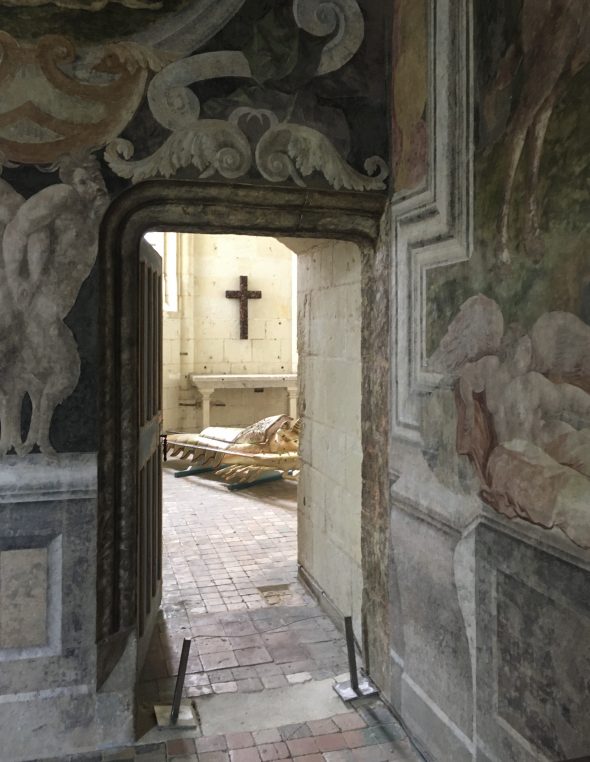
Through a door of the Renaissance gallery, the High Chapel with Jan Fabre’s crucifix and Kane Kwei’s Lobster and Eagle coffins
The famous frescoes of the 55 m long Renaissance gallery were already mentioned by Prosper Mérimée in 1840 as needing restoration. This is done today and they represent the war of Troy with Helen’s abduction by Pâris, the city of Sparta in ruins and the Trojan horse. An absolute beauty. They were painted by a disciple of Primatice, who was active in Fontainebleau and Abbaye de Chaalis. And don’t forget to look at the wooden painted ceiling.
There is much to see in Oiron and it is a perfect stopover on the way from Paris (3.30 hr) to La Rochelle (2hr). I loved the simple 30€ three course lunch at La table de Jérémy in the village, which I shared with the charming administrator Jean-Luc Meslet who runs the place for Centre des Monuments Nationaux and is an active art lover. And I also enjoyed the sinuous road through Abbaye de Fontevraud which is worth visiting if you have time. The charm of this area in les Deux Sèvres, a department rich in gastronomy and castles, cheese and truffles, is worth discovering.
Château de Oiron “Le grand Bazar” until October 3, and La Table de Jérémy
Share this Post
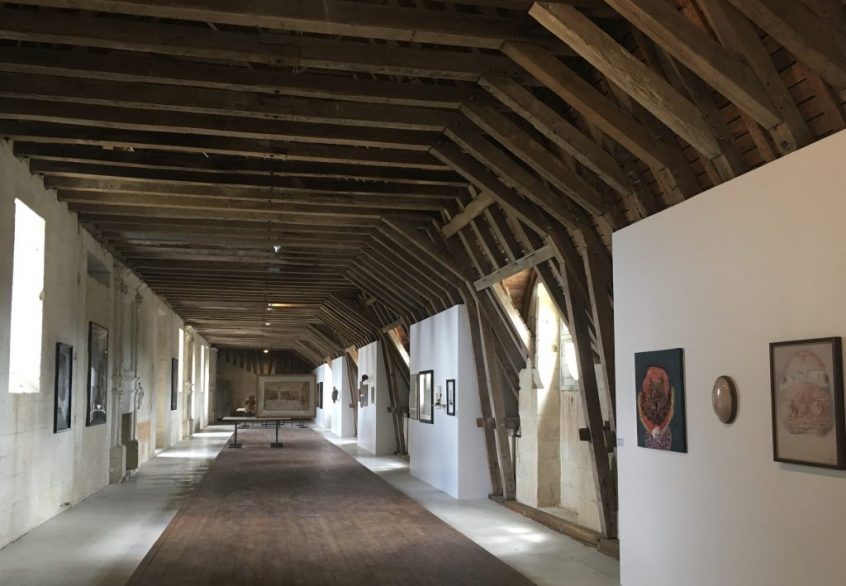

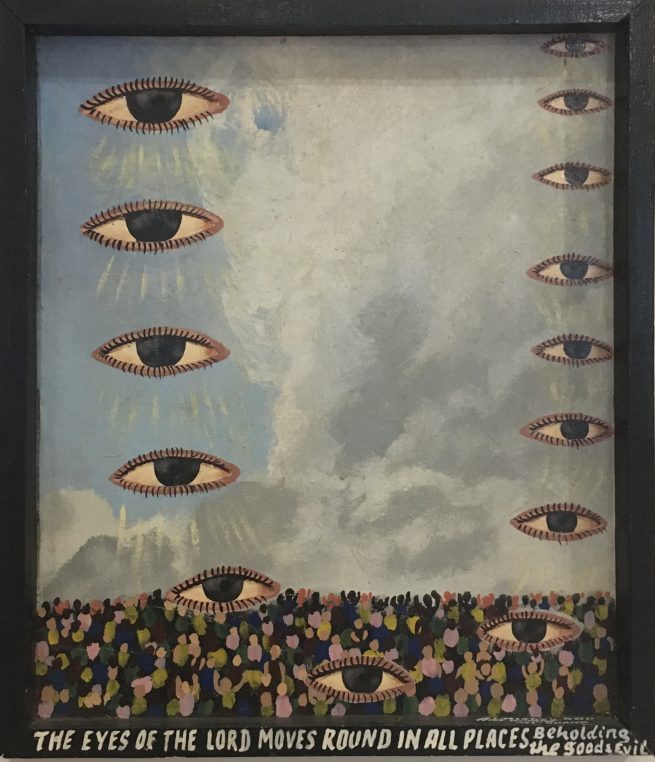
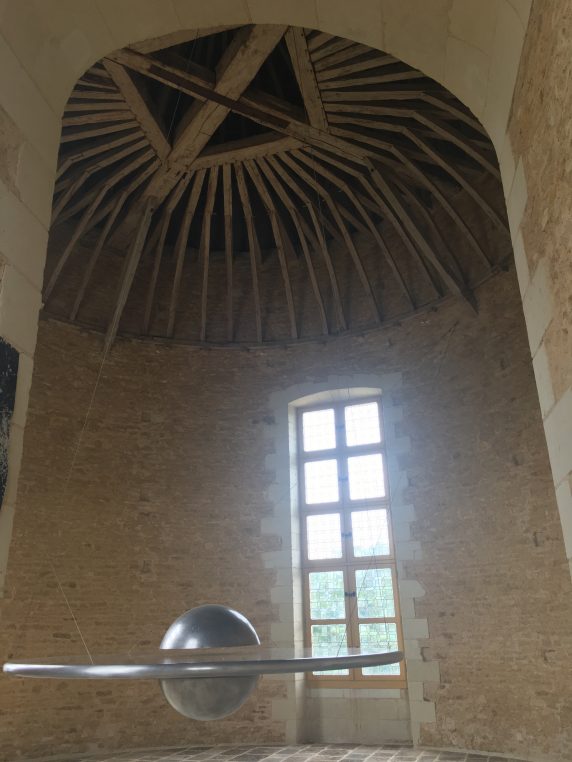
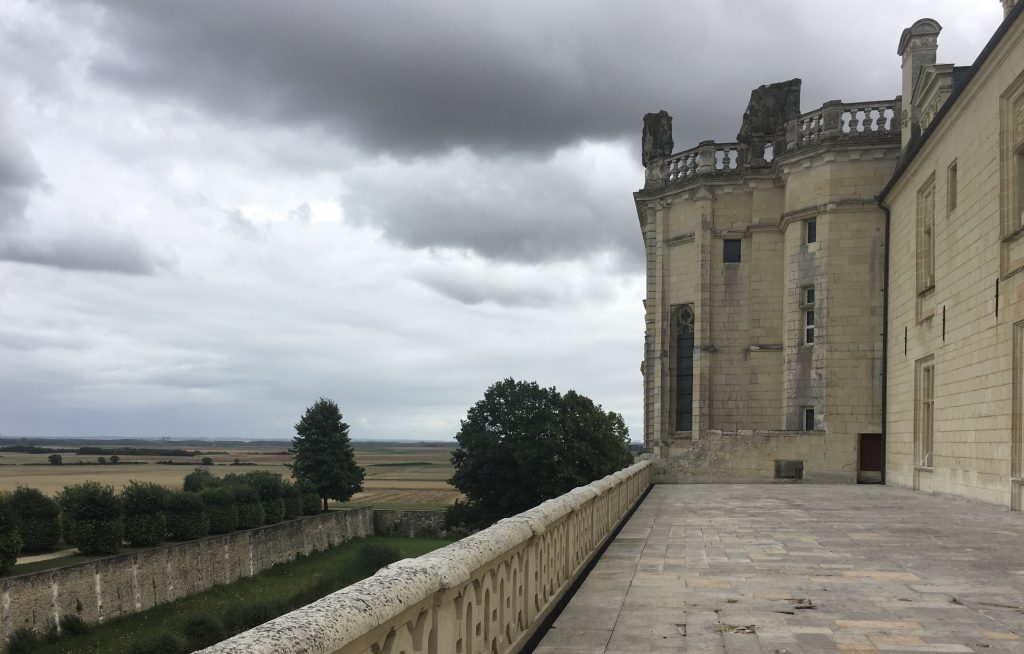

2 Comments on “At Château d’Oiron “Le grand Bazar” reigns.”
Merci Laure pour ce regard critique du temple de la consommation « la samaritaine », et le regard cette fois amoureux, de l’exposition au château d’oiron.
Je regagne la capitale cet après midi, après un séjour sous les astres de saint jean cap ferrat.
Claudette.
Fascinating stuff, thank you Laure!